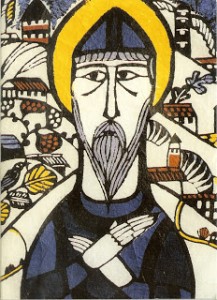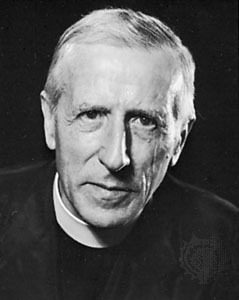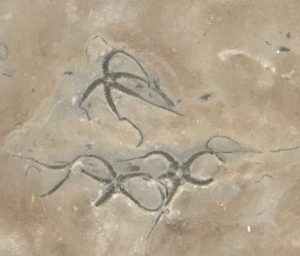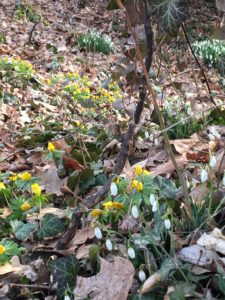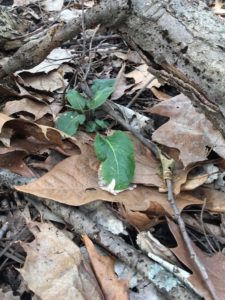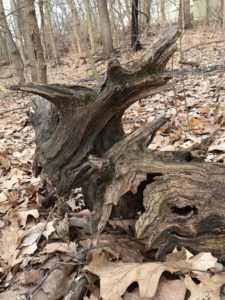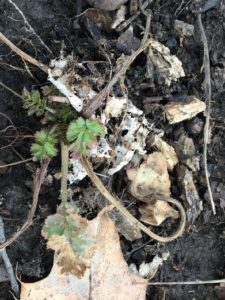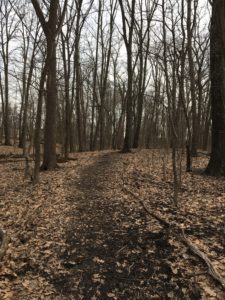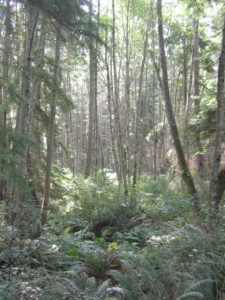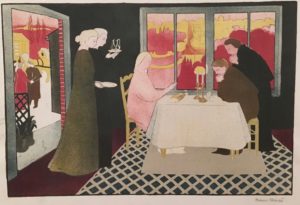
The Pilgrims of Emmaus by Maurice Denis, French 1870-1943 Color lithograph
Photo: Mary van Balen
People long for hope, for peace, for cooperation. While some are bent on stirring up distrust, and spreading fear based on dividing the world into “us” and “them,” most of humankind is looking for a better way in 2020.
Many I talked with over the holidays desire an end to such divisiveness. Some Christmas cards I received included handwritten notes expressing that hope. How do we get there in the midst of issues facing us today? I don’t know. Looking at the big picture, I’m often at a loss.
I turned to the Scriptures, reading through the Roman lectionary’s January passages. One line from the first Letter of Saint John made me stop, not because it inspired, but because I didn’t understand what it was saying: “Beloved, we are God’s children now; what we shall be has not yet been revealed. We do know that when it is revealed we shall be like God, for we shall see God as God is.”
How can we become like God just by seeing the Holy One? I pulled commentaries off the shelf. Not much help.
So, I sat with it. I didn’t try to figure them out, just let the words sink in. That night, I wrote in my journal:
Slowly, God’s gaze draws forth in our souls the reflection of God that we are. Resting in that Presence, we become aware of the Holy One looking at us with love and recognition of God’s heart within our own.
I thought of loving looks from people in my life. Not a response to something you did, such a look simply celebrates the reality of you. When experienced, you know its power to help you become your best self.
I carried the scripture’s words around for another day and in the afternoon saw “It’s a Beautiful Day in the Neighborhood,” starring Tom Hanks as Fred Rogers. I was hesitant about an actor playing the iconic figure, but the story drew me in. I wasn’t disappointed.
No spoilers here. I’ll just say there was a lot in that movie about the power of being in the presence of Love.
As the packed theater slowly emptied, I walked down the steps, stopping as a woman in front of me helped a much older one navigate her descent. The middle-aged woman guided her friend to a walker that was sitting behind a row of seats at floor level.
“Go ahead,” she said to me, “This will take a while.”
“That’s ok,” I replied. “I’m not in a hurry.”
She smiled. “Well, how could you not be kind after watching that movie?” I nodded. “Fred Rogers is the closest person to Jesus Christ I’ve ever seen,” she said.
Her comments mingled with the words of Saint John: How could you not be kind after seeing that movie? Watching someone truly seeing, accepting, loving … it changes us. If seeing a movie could make folks a bit kinder, what happens when one “sees” God as God truly is?
And wasn’t watching the story of Fred Rogers caring about others also seeing a bit of God – God who lives and works in and through us? Isn’t that what we’ve been celebrating this Christmas season: the ongoing incarnation and our call to participate in it?
We become more like God the more we see God, the more God’s love moves through us. That’s where hope rests: in God’s transforming Love.
The First Letter of Saint John is full of reminders that we are called to love, that we cannot hate others and love God at the same time, that it isn’t enough to believe in the Christ. Our actions must mirror those of Jesus.
However we participate with it, however we speak truth to power, however we look at others with love and acceptance, we are participating in the work of healing and salvation. Hope is trusting God to make it enough.
©2020 Mary van Balen



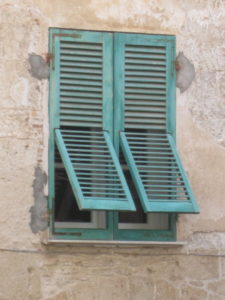

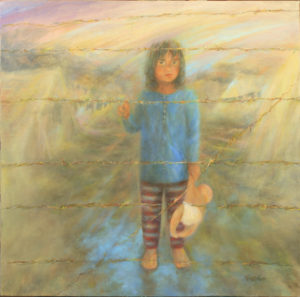

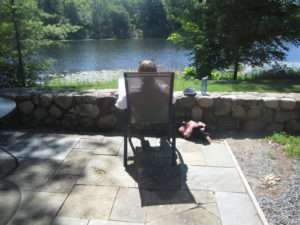


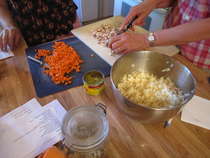
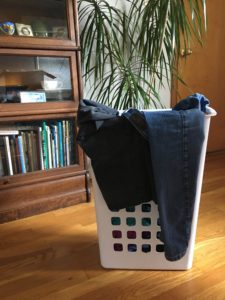 He and his wife were busy folding loads of laundry and sorting it into piles for each of their four children. They were preparing for a month-long trip to visit both sets of grandparents and, in addition to that, camping for a week. In the midst of their preparations, they offered hospitality to a visiting aunt, which would be me. And of course, all four children were around, talking to their visitor and taking care of their own preparations—which may have included cleaning rooms and gathering books to take. I leave it to your imagination. Not a lot of time there to sniff the laundry.
He and his wife were busy folding loads of laundry and sorting it into piles for each of their four children. They were preparing for a month-long trip to visit both sets of grandparents and, in addition to that, camping for a week. In the midst of their preparations, they offered hospitality to a visiting aunt, which would be me. And of course, all four children were around, talking to their visitor and taking care of their own preparations—which may have included cleaning rooms and gathering books to take. I leave it to your imagination. Not a lot of time there to sniff the laundry.